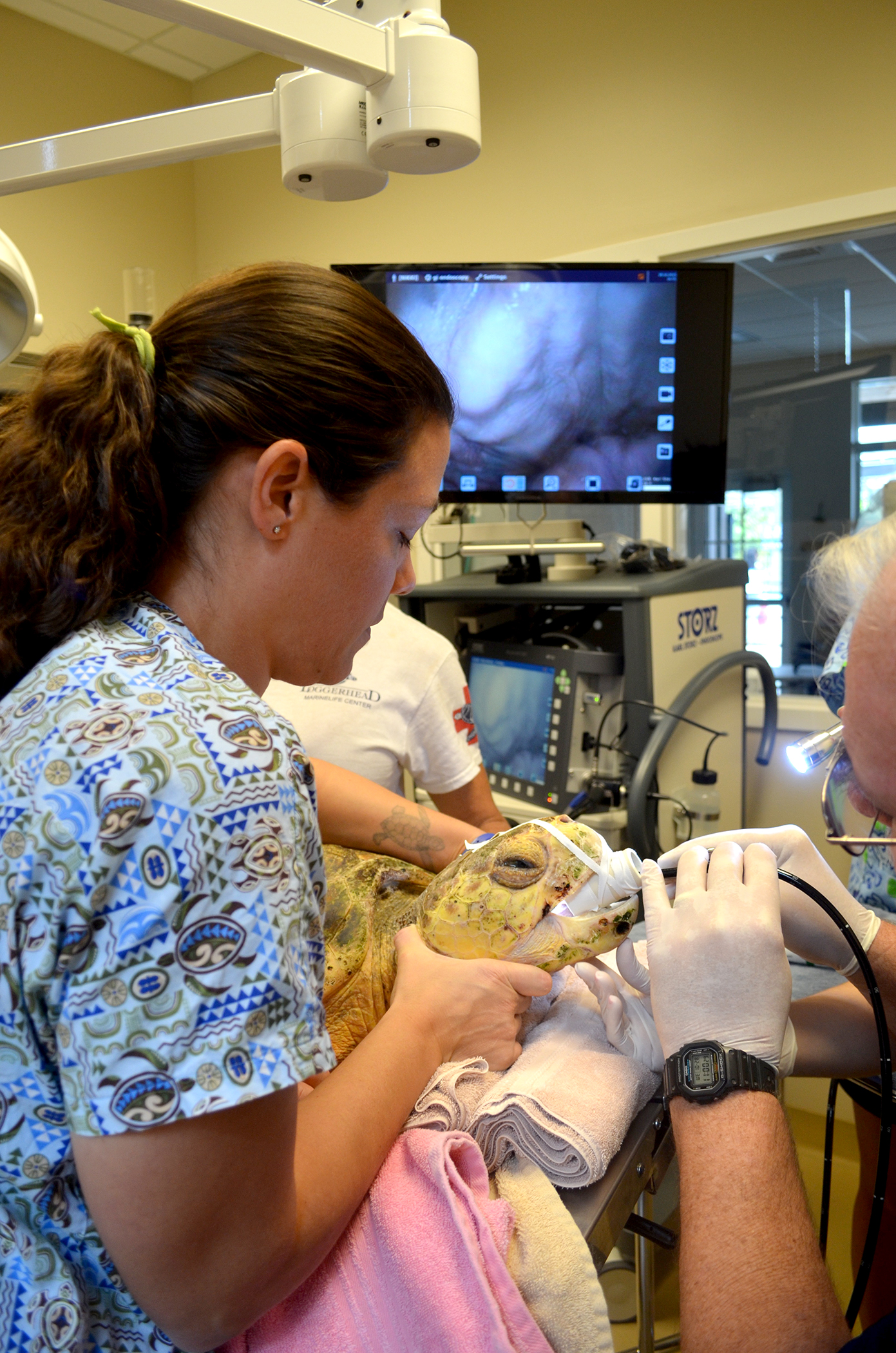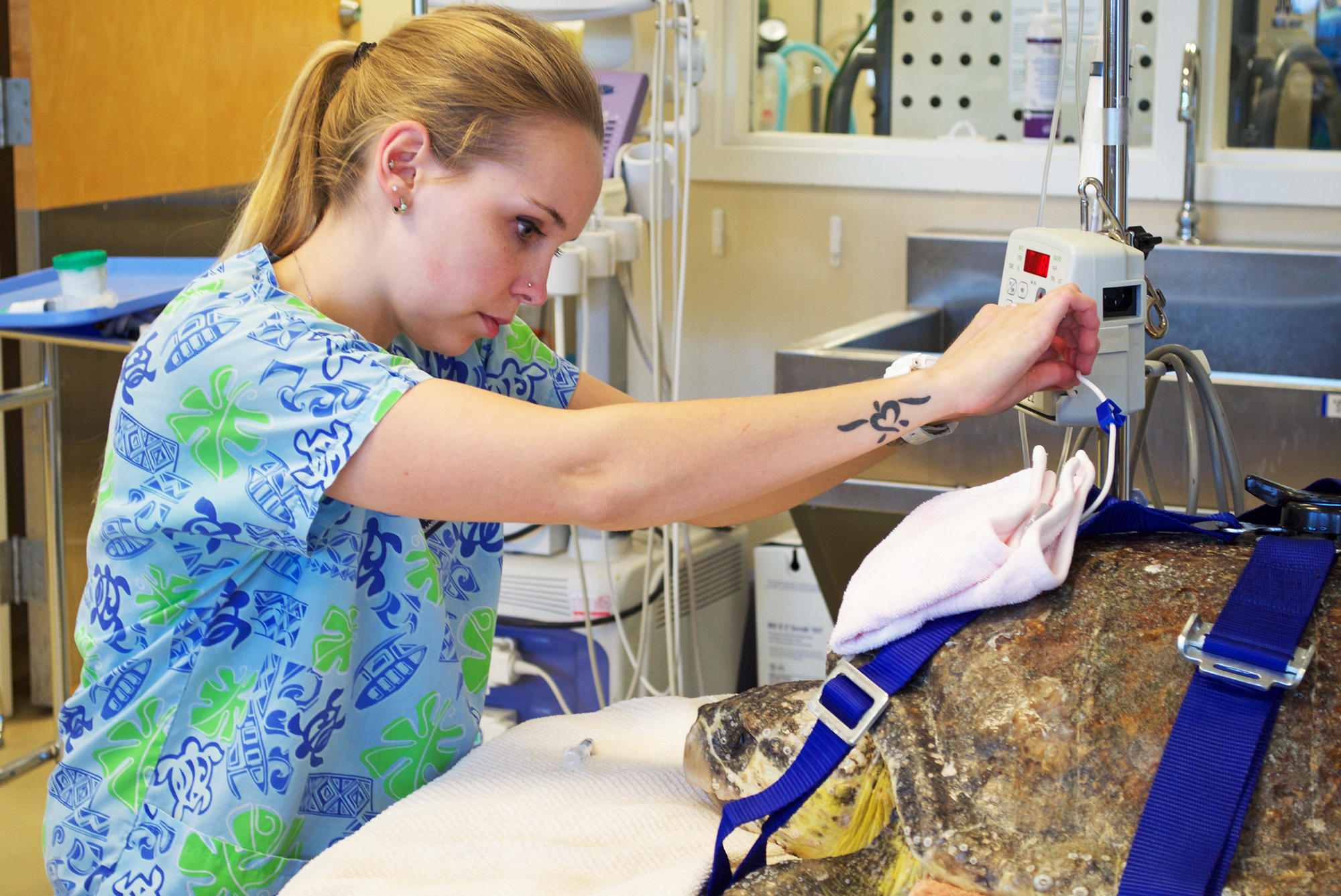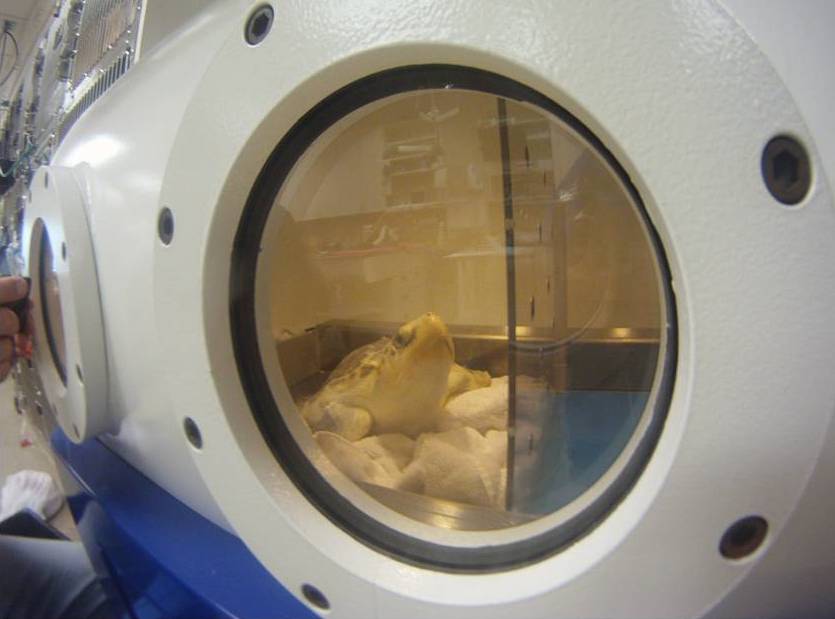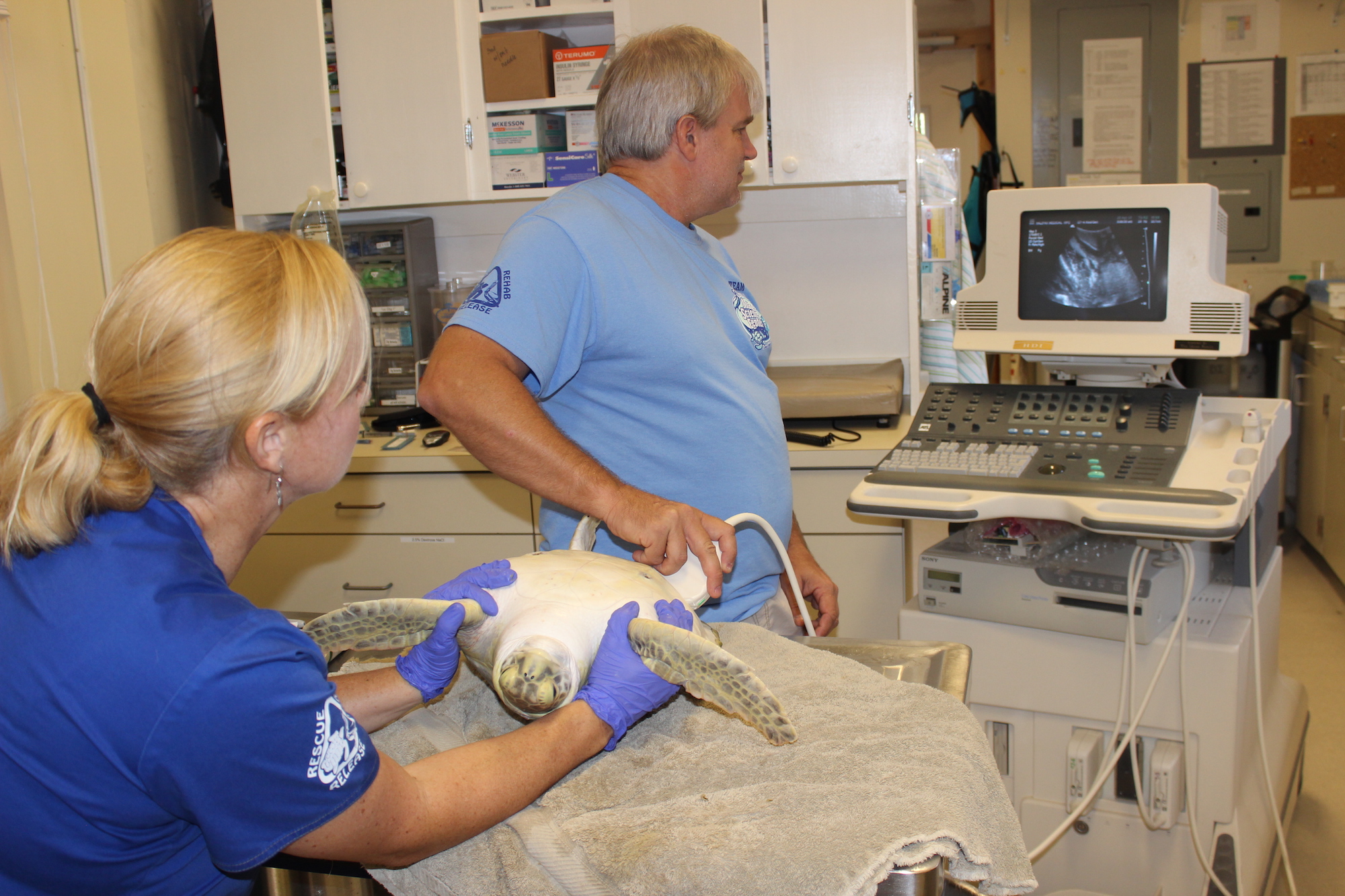It isn’t every day that surgeons have to remove 5kg of coins from the belly of a patient. It’s even more remarkable when that patient is a sea turtle.
Image: AP/Sakchai Lalit
That’s exactly what happened in Thailand last month, when a captive green sea turtle named Omsin, which means “Piggy Bank” in Thai, was rushed into emergency surgery. She was drowning because the coins she ate, thrown into her tank for good luck, had formed a heavy ball in her stomach, cracking her ventral shell and causing an infection, according to the Associated Press. While the surgery was a success — 915 coins were removed — blood poisoning from nickel leaching later killed her.
For Piggy Bank, it was a tragic ending to a life of unhappy captivity. But the beloved sea turtle’s death might not have been in vain. Every cutting-edge medical procedure performed on a sea turtle is a learning experience for the small but dedicated group of veterinarians who treat these unusual patients.
Each year, there are hundreds of examples of medical procedures used to save the lives of sea turtles injured by boat propellers or fishing gear, or sickened by pollution. Turtle medicine is still a young field and, according to Charles Manire, staff veterinarian and director of research and rehabilitation at Loggerhead Marinelife Center (LMC) in Juno Beach, FL, and it often entails making up treatments as you go along.

During TPN treatments, turtle patients are balanced on swimming noodles to prevent damage to their internal organs, and are strapped to the treatment table with donated (used) racecar harnesses. Photo Credit: Loggerhead Marinelife Center
There are seven species of sea turtles alive today, all of which are on the threatened or endangered species list. It is difficult to know exactly how many sea turtles are left, because they spend most of their lives in the water, and the males don’t typically come on shore. But we do know that hunting for food and trade, commercial fishing, marine pollution, beach tourism and oil spills have precipitated a crisis for these animals, with tens of thousands of sea turtles lost at the hands of humans each year.
Not all humans are complicit in the sea turtle genocide, however — some, including those working in sea turtle hospitals like LMC, are actively trying to save our aquatic neighbours. As grassroots organisations started by seaside communities and supported by private funds, universities or non-profits, sea turtle hospitals are responsible for educating the general public, marine businesses and power plants utilising canals on what to do when stranded or injured turtles are found. They provide rescue hotlines, and send trained volunteers to pick up and transport the scaly patients to facilities for care.
Then, it’s up to veterinarians, armed with a slew of antibiotics, analgesics, sedatives and nutritional supplements, to figure out the best way to treat the sick or injured animals. This is where things get tricky, because most of the drugs at the sea turtle doc’s disposal were designed for humans.

“There are absolutely no drugs labelled for use in sea turtles, so much of it starts out as trial and error,” Manire said. “Some drugs do not work at all in sea turtles and most that do work require less frequent administration because of the slow metabolism of reptiles.”
Most medical procedures performed on sea turtles are ported over from human and pet medicine, too, and they often need to be modified. “Just as a procedure is slightly different when applied to a cat versus a dog,” explained Craig Pelton, staff veterinarian at Marine Science Center (MSC) in Ponce Inlet, FL. “It is essential [that] the veterinarian interpreting diagnostic results or performing a procedure understands sea-turtle anatomy, physiology and behaviour.”
For instance, a vet interested in checking out a sick sea turtle’s stomach to see if it swallowed a bunch of plastic bags (or coins) might decide to perform an endoscopy, in which a camera in a tube is stuck down the throat, knowing that her patient lacks a gag reflex. Other techniques are more challenging and depend on the personality of the patient — good luck telling a 180kg marine reptile to hold still for an X-ray.
“A human can be instructed to stay still,” Manire said. “When a sea turtle patient requires an MRI, the turtle must be sedated or given general anaesthetic so that it does not move.”

A TPN treatment is administered at the LMC veterinary clinic.Photo Credit: Loggerhead Marinelife Center
Tongue depressors are used to check a turtle’s throat for damage, or to splint a broken flipper before it’s wrapped with an ACE bandage. Blood tests are used to check glucose levels (which can be used to diagnose malnutrition), orthopaedic surgery repairs fractured shells from boat strikes or predators, and a hyperbaric oxygen chamber treats sepsis. Recently, the LMC began using a cold laser treatment to promote cell growth. The MSC is currently raising funds to purchase a cold laser of its own. Published data on the efficacy of these procedures is limited. Often, doctors are just doing what seems to work best, and sharing their findings with their peers.
One of the most common life-threatening illnesses sea turtle vets see is chronic debilitation syndrome (CDS), or debilitated turtle syndrome. Turtles with CDS suffer from malnutrition, lethargy and fatigue. Without intervention, they don’t eat, and eventually starve. There’s no single cause for the illness and no known cure.

A sea turtle patients in the Hyperbaric Oxygen Chamber at Ravenwood Animal Hospital. Photo Credit: Dr Craig Pelton/Marine Science Center.
In 2014 and 2015, the LMC pioneered a treatment for malnutrition in sea turtles, using a special mix of liquid nutrients delivered by an IV. Because malnourished turtles are so weak, they can only be out of the water for brief periods (a similar procedure takes several hours for human beings). So LMC developed a rapid infusion requiring only one hour on a hospital gurney a few times a day.
A deadly intestinal parasite found in dogs and cats — coccidia — is also killing sea turtles. When MSC diagnosed the first such infection in a live turtle in the US, vets researched drugs that could potentially kill it. A horse drug with no previous reported uses on sea turtles seemed to be the best, according to Pelton.
“The treatment was successful and the information was passed on to other sea-turtle veterinarians,” he said.

Dr Pelton and Melissa Ranly performing and ultrasound on a juvenile green sea turtle to look for issues in the digestive tract. Photo Credit: Jackie Shum/ Marine Science Center.
“In wildlife rehabilitation we have learned to be creative with our resources as we have limited budgets,” said Melissa Ranly, manager of turtle rehabilitation and environmental specialist with MSC. “Our field does not have clients paying the bill.”
Maybe not, but the field does have dedicated men and women performing life-saving procedures on a species we haven’t shared a common ancestor with in a few hundred million years — and that’s nothing to sniff at. While there are plenty of procedures that don’t end up working, and patients like Piggy Bank who simply can’t be saved, there are also lots of success stories. In 2014, the Juno Beach facility treated 106 sea turtles. Of those, 45 patients were swimming in the ocean again later that year.
